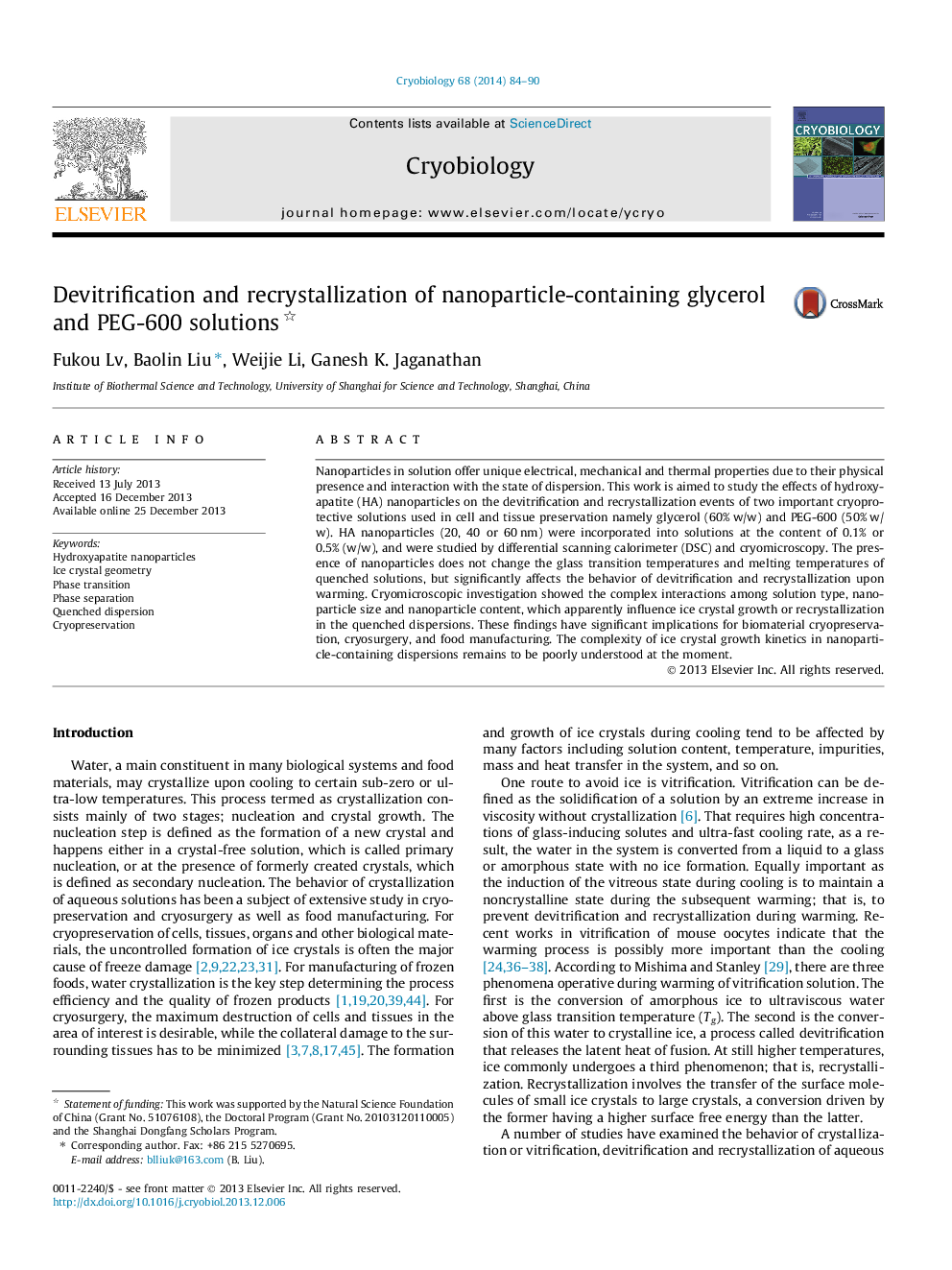| Article ID | Journal | Published Year | Pages | File Type |
|---|---|---|---|---|
| 10928029 | Cryobiology | 2014 | 7 Pages |
Abstract
Nanoparticles in solution offer unique electrical, mechanical and thermal properties due to their physical presence and interaction with the state of dispersion. This work is aimed to study the effects of hydroxyapatite (HA) nanoparticles on the devitrification and recrystallization events of two important cryoprotective solutions used in cell and tissue preservation namely glycerol (60%Â w/w) and PEG-600 (50%Â w/w). HA nanoparticles (20, 40 or 60Â nm) were incorporated into solutions at the content of 0.1% or 0.5%Â (w/w), and were studied by differential scanning calorimeter (DSC) and cryomicroscopy. The presence of nanoparticles does not change the glass transition temperatures and melting temperatures of quenched solutions, but significantly affects the behavior of devitrification and recrystallization upon warming. Cryomicroscopic investigation showed the complex interactions among solution type, nanoparticle size and nanoparticle content, which apparently influence ice crystal growth or recrystallization in the quenched dispersions. These findings have significant implications for biomaterial cryopreservation, cryosurgery, and food manufacturing. The complexity of ice crystal growth kinetics in nanoparticle-containing dispersions remains to be poorly understood at the moment.
Related Topics
Life Sciences
Agricultural and Biological Sciences
Agricultural and Biological Sciences (General)
Authors
Fukou Lv, Baolin Liu, Weijie Li, Ganesh K. Jaganathan,
